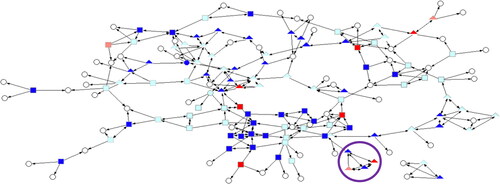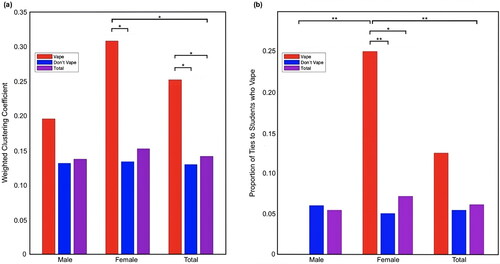Figures & data
Figure 1. High school network by gender, vape status, and self-reported susceptibility to peer influence.
Triangle: Female; Square: Male; Circle: Other gender identity; White circle: Did not respond but in a respondent’s friend list; Dark blue: Do not vape and believe they are influenced by peers; Cyan: Do not vape and believe they are not influenced; Bright red: Vape and believe they are influenced Light mango: Vape and believe that they are not influenced; Purple circle denotes a closed network of female students bridged by one student.

Figure 2. Weighted clustering coefficient (a) and proportion of ties to respondents who vape (b) by gender and Vape Status. *p < .05; **p<.01

Table 1. Vape status by gender, age, grade level, self-reported peer-influence status, average tie strength, and average number of ties.
